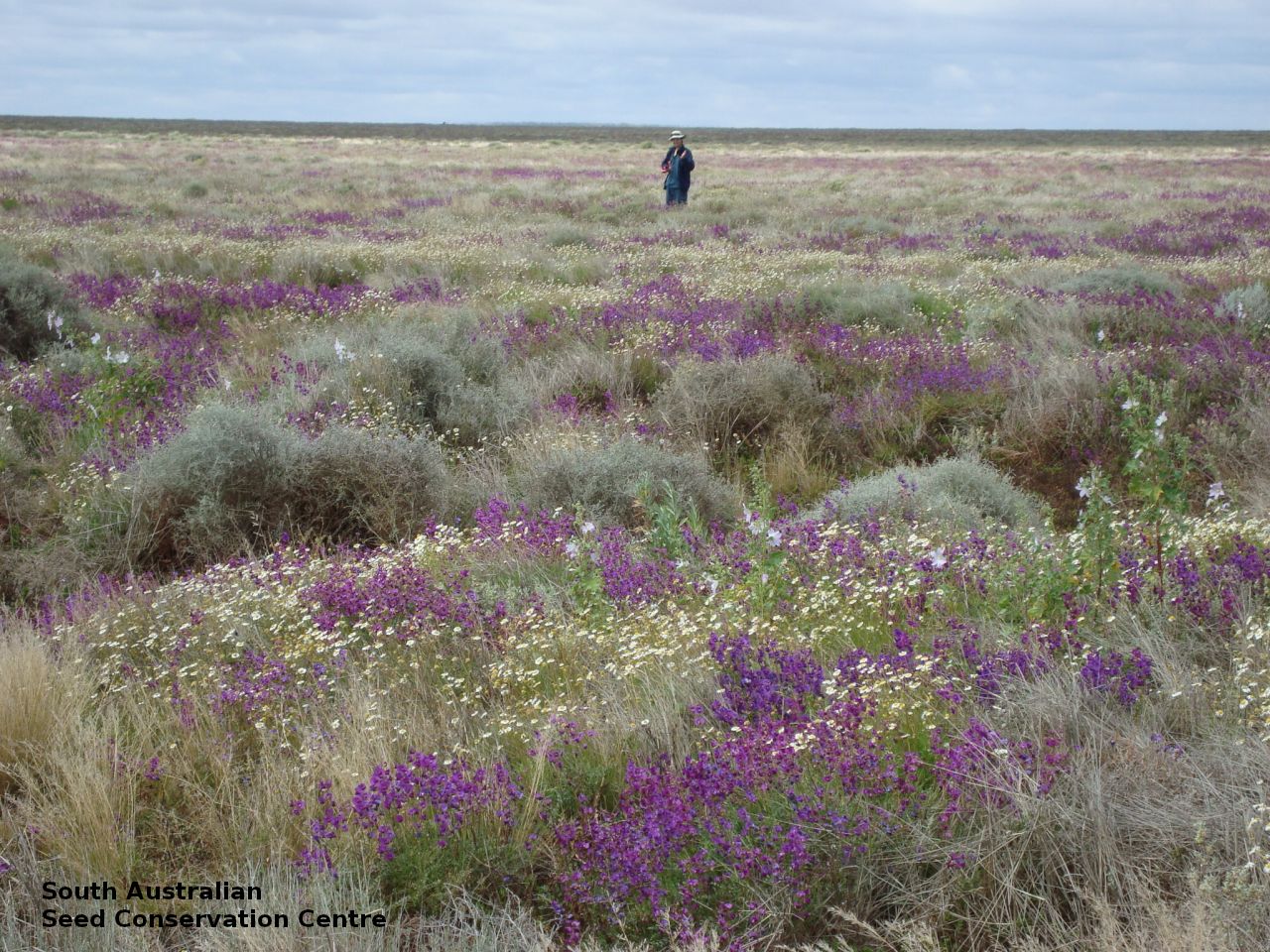
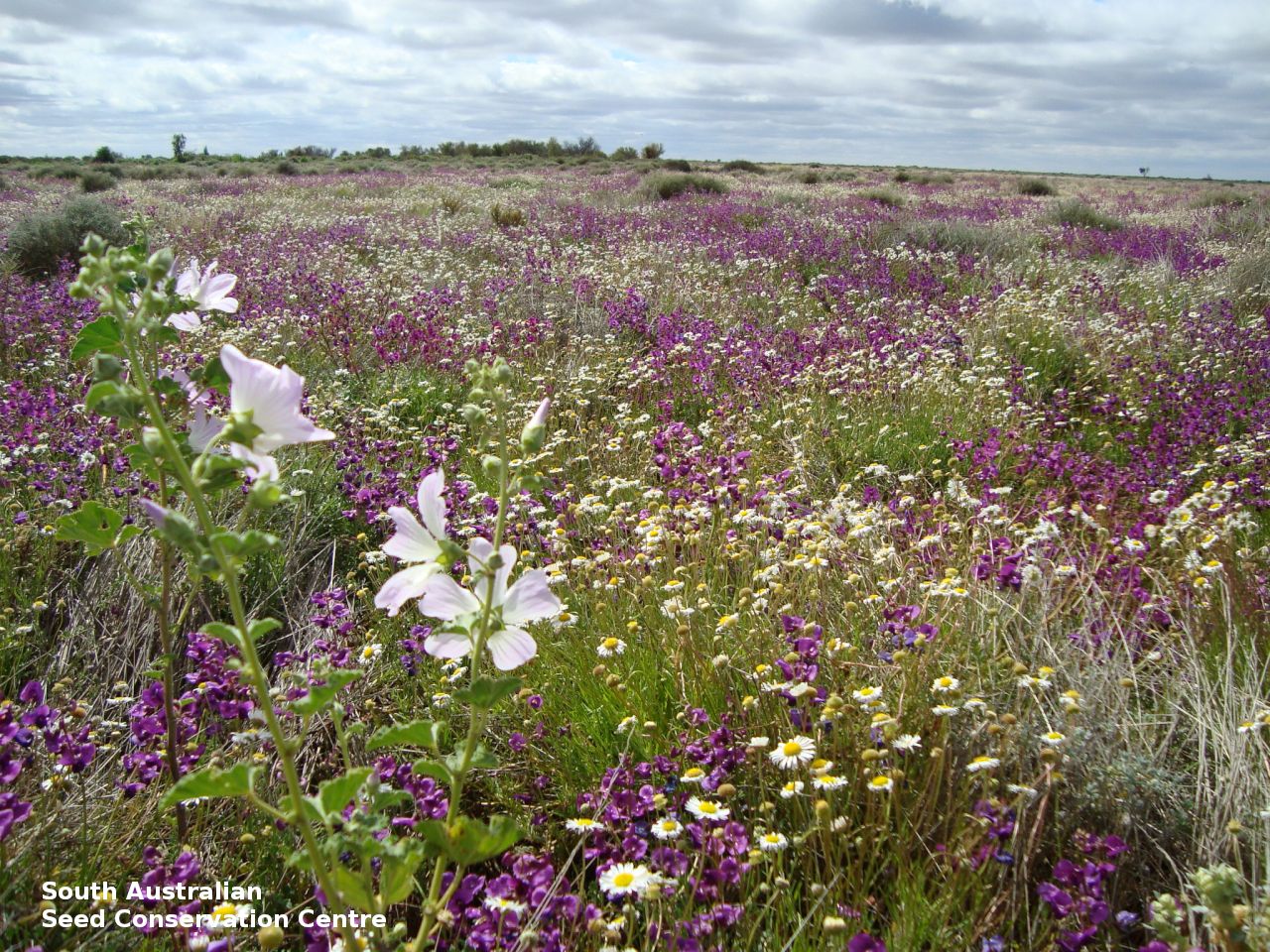
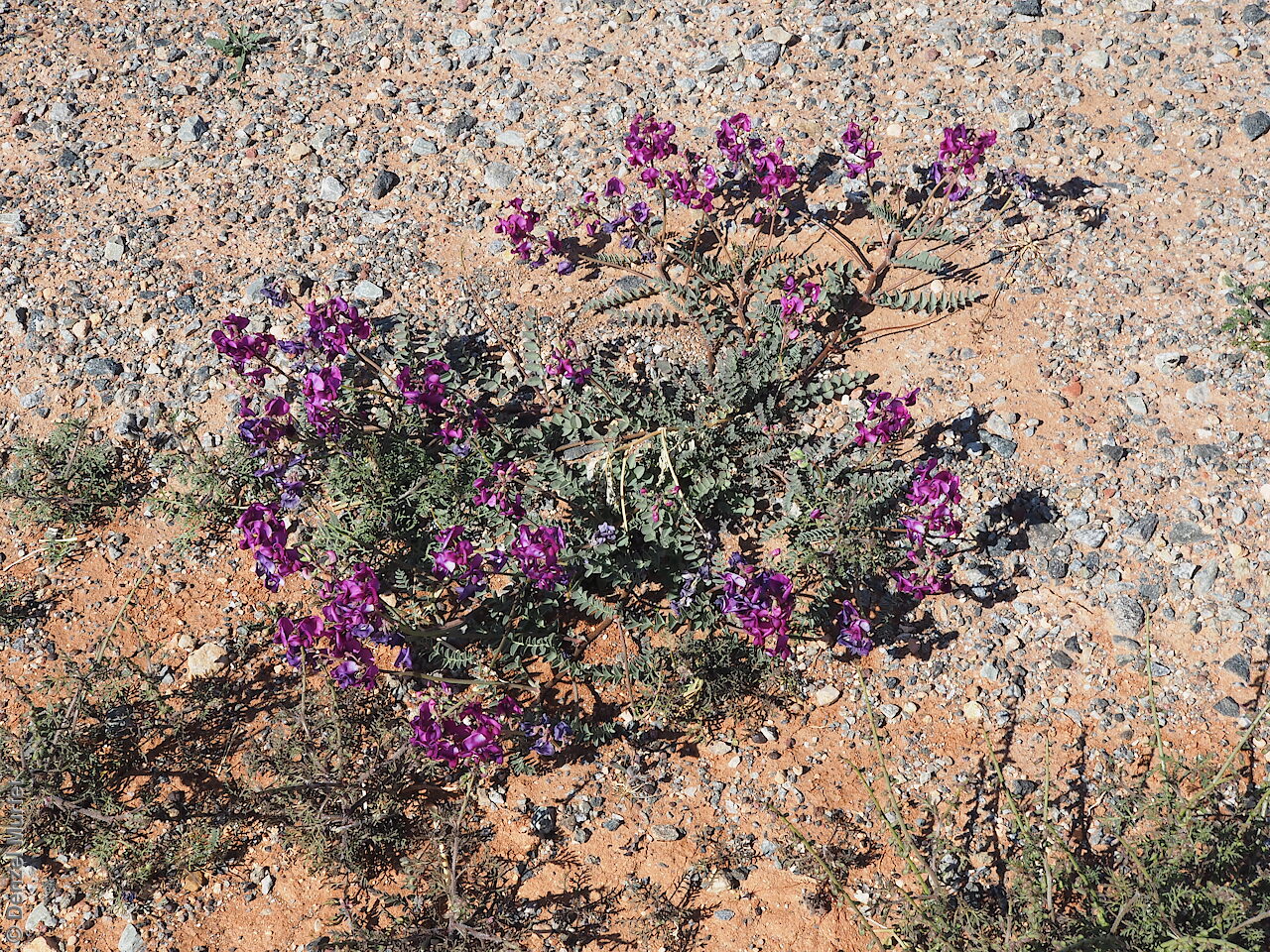
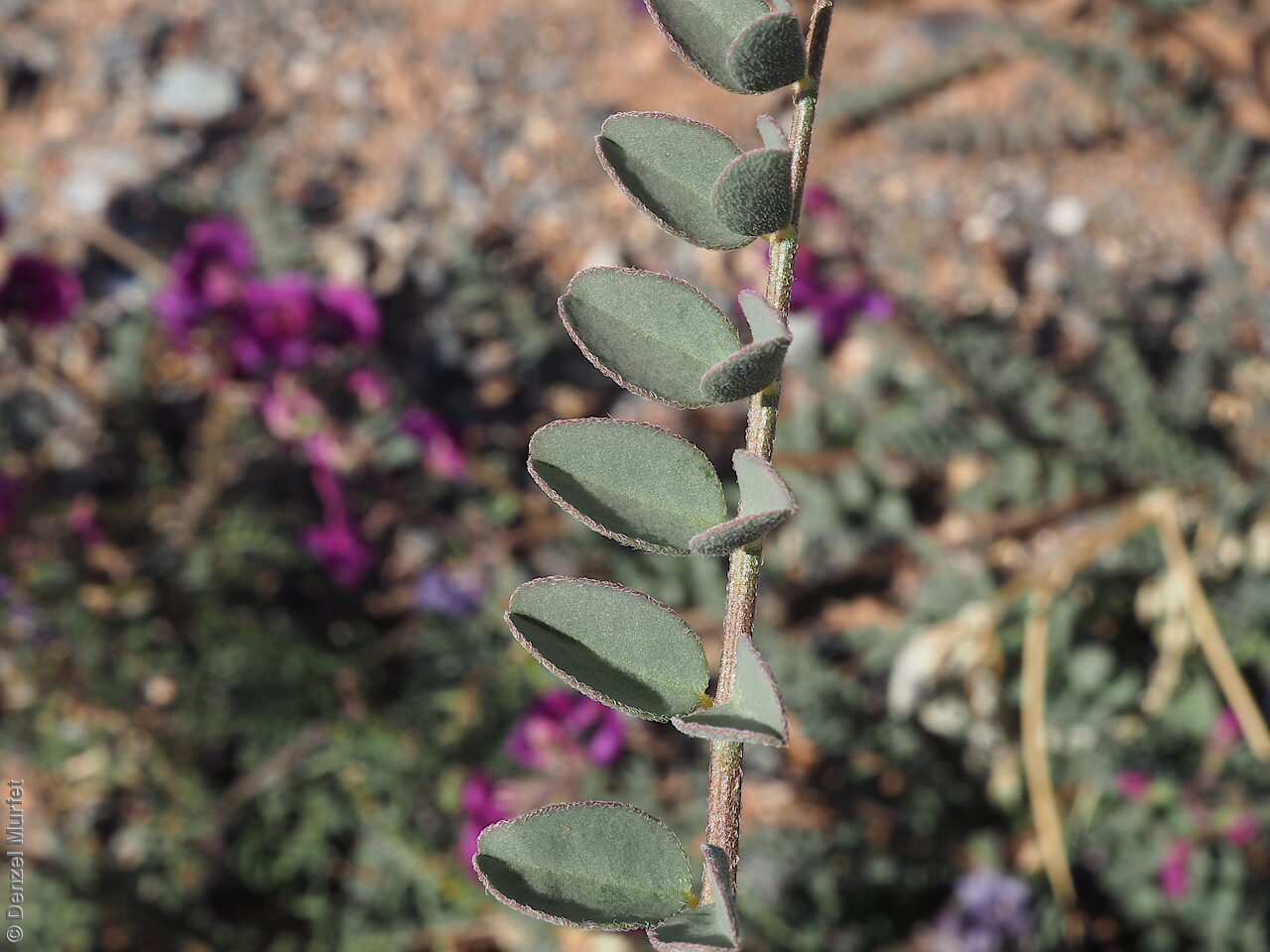
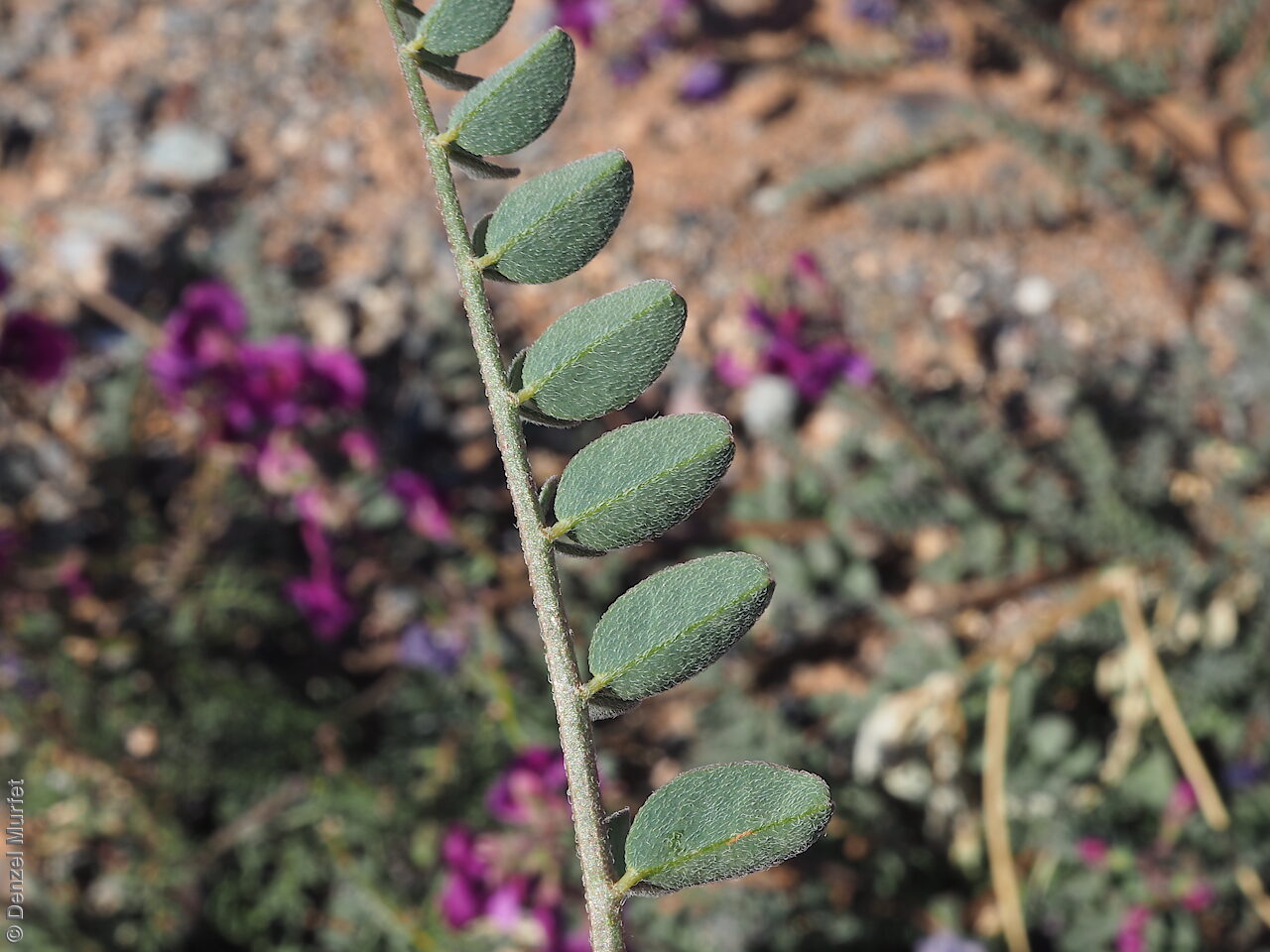
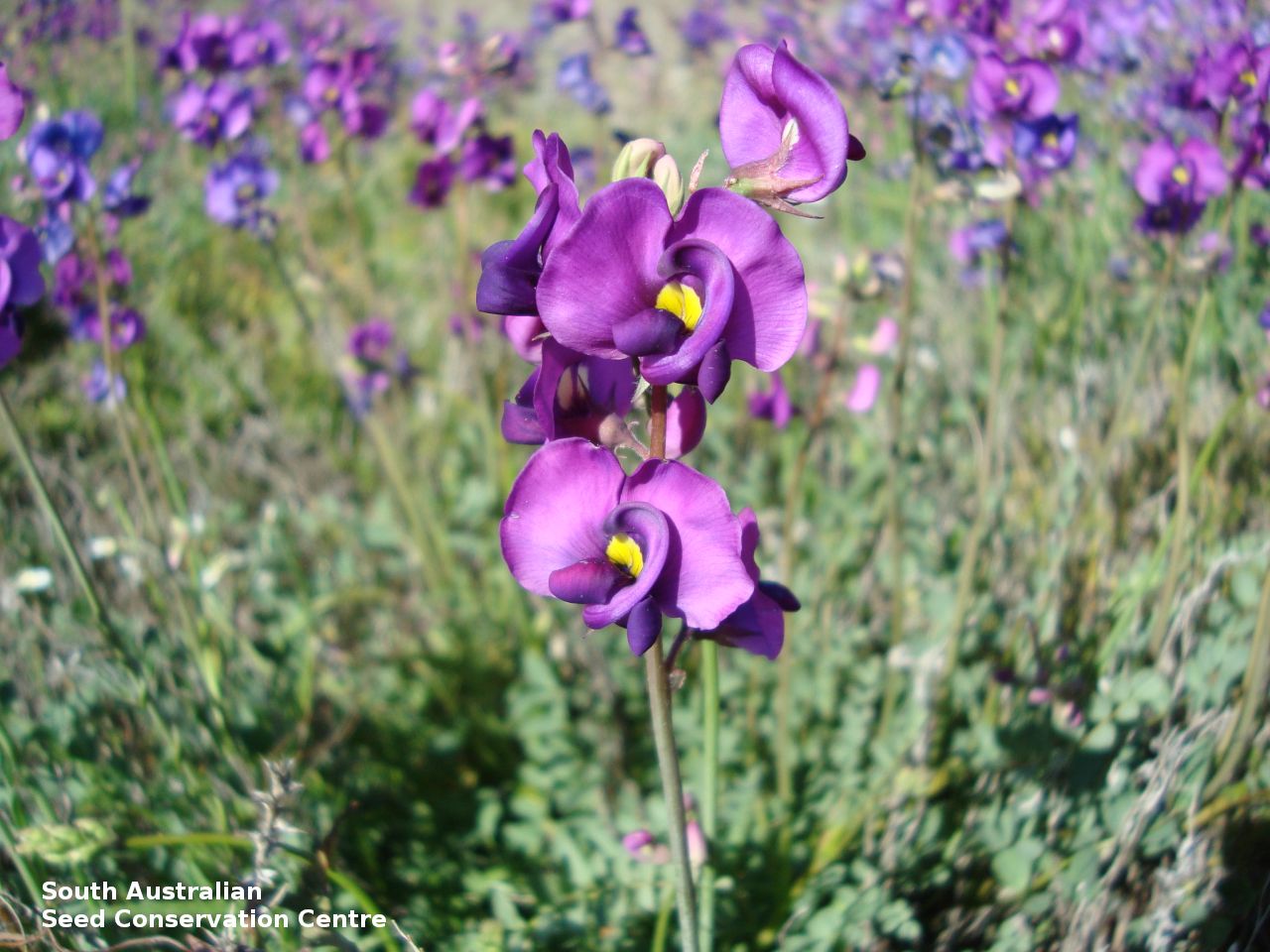
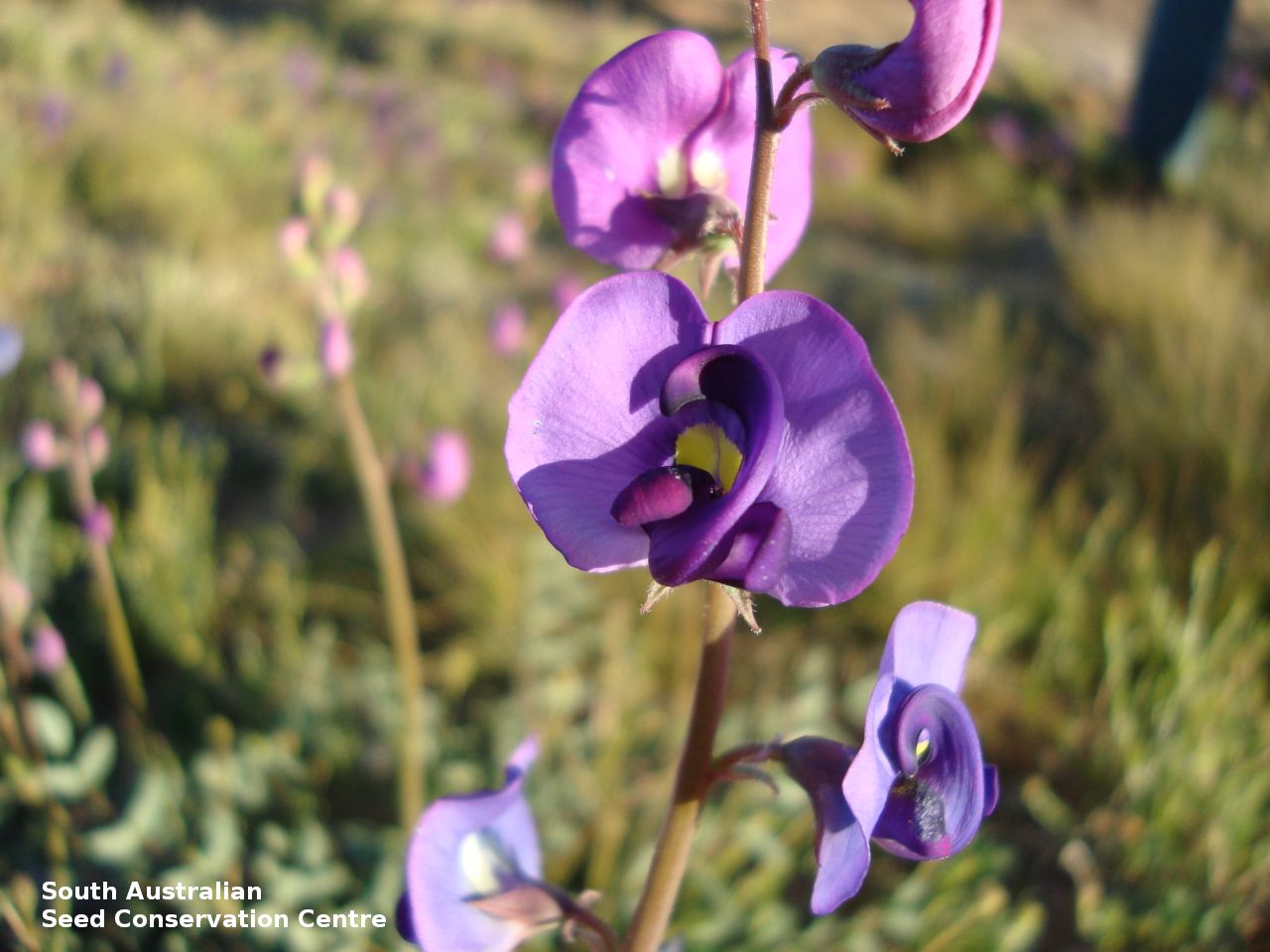
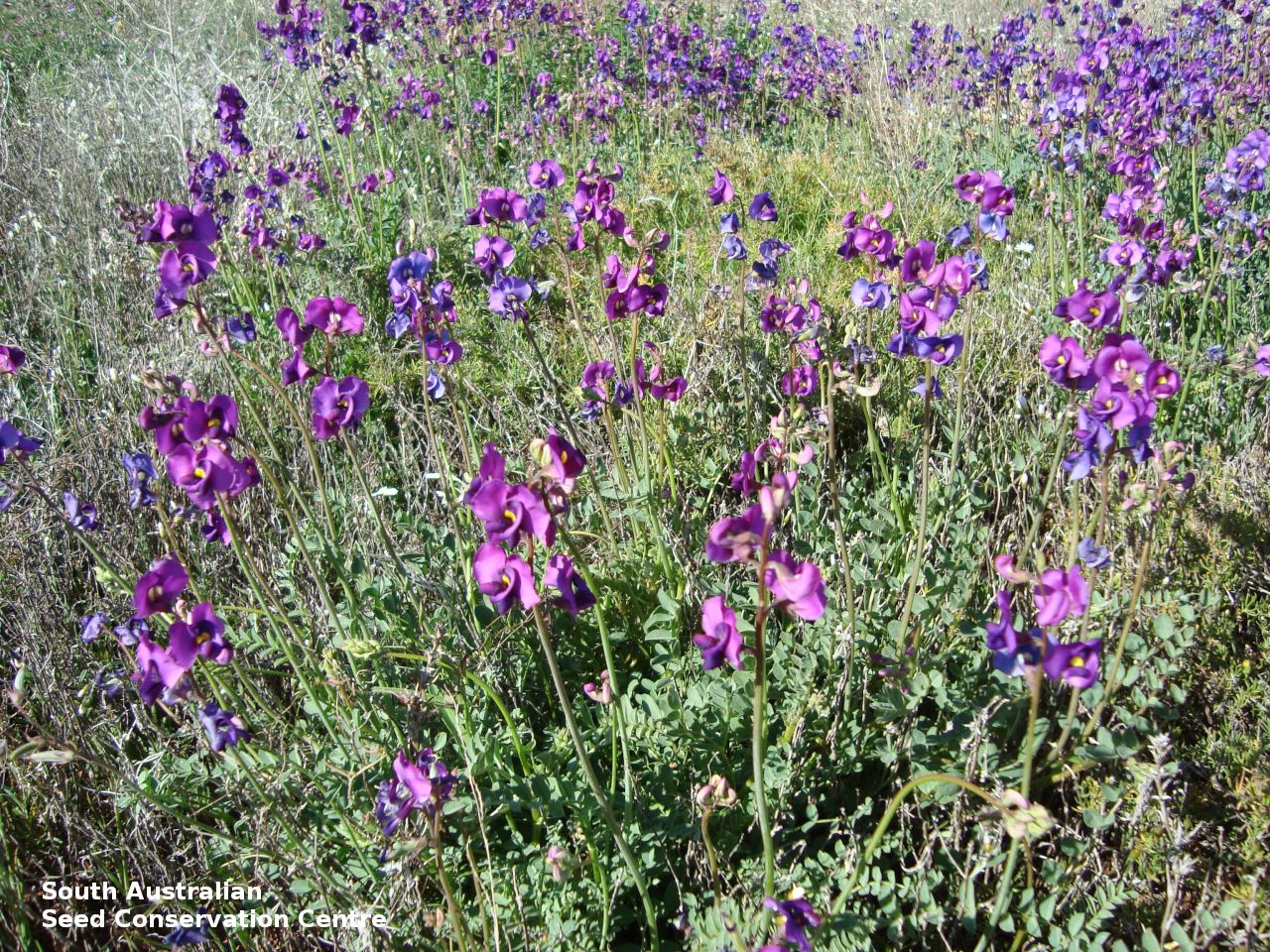
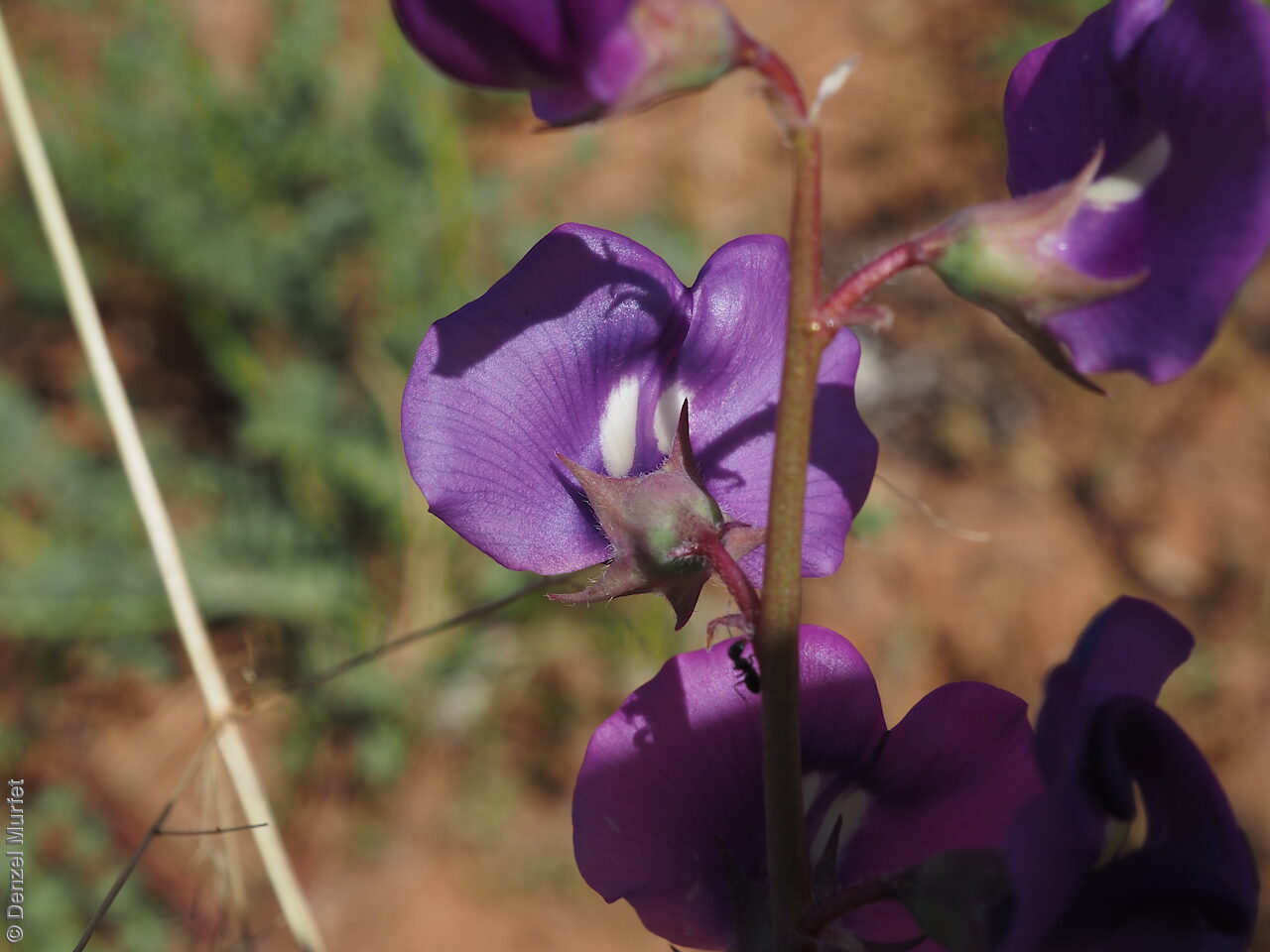
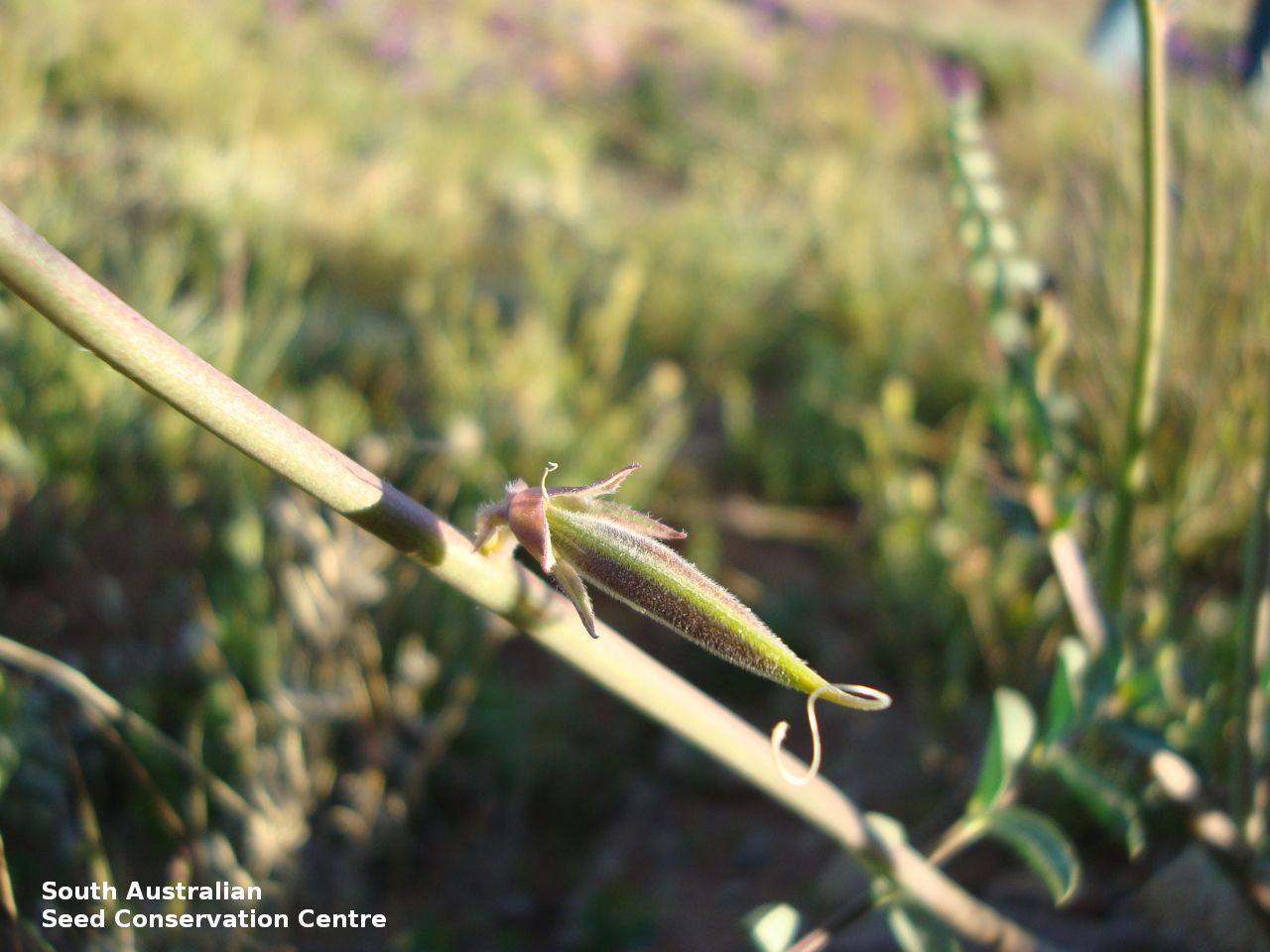
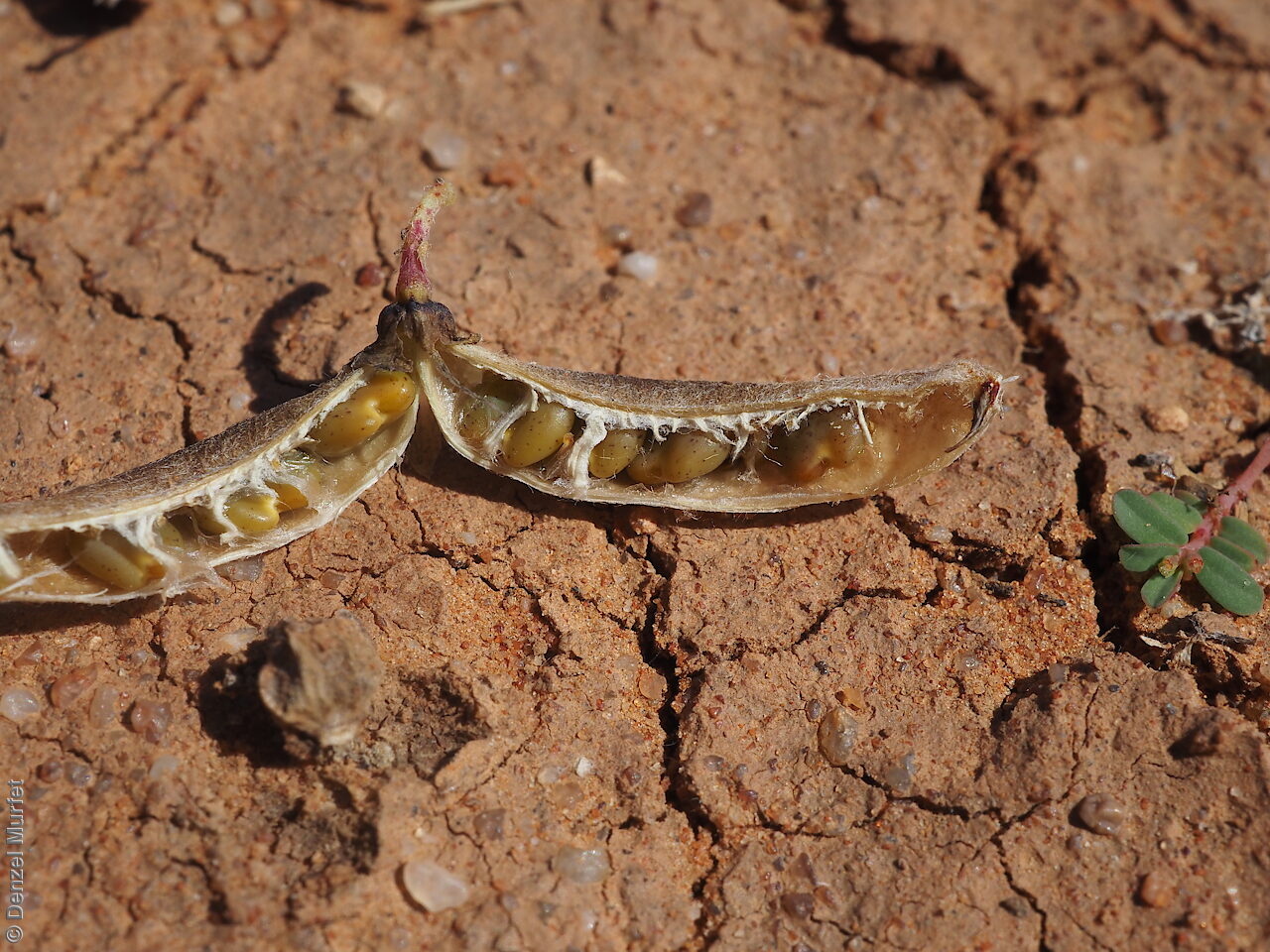
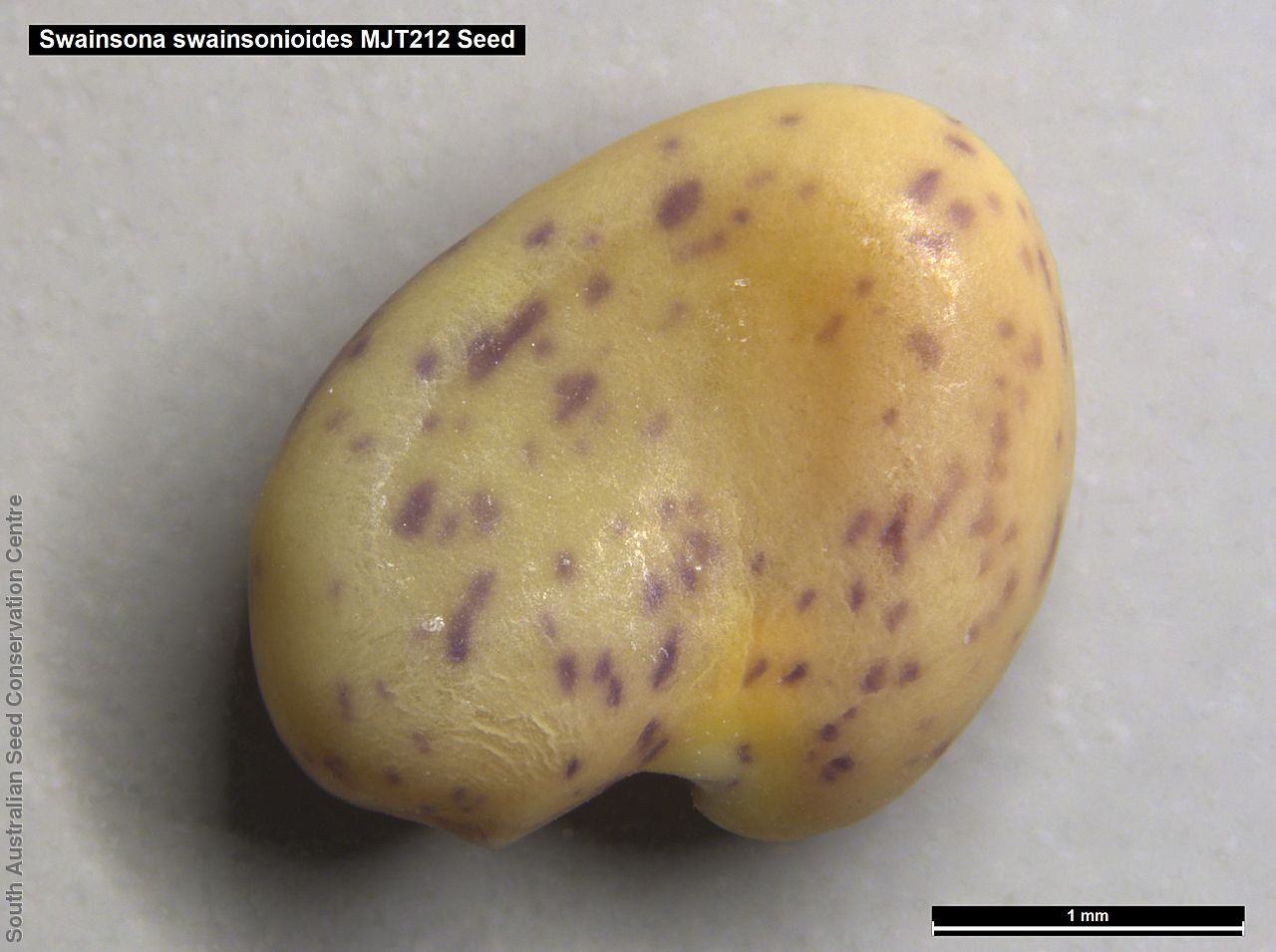
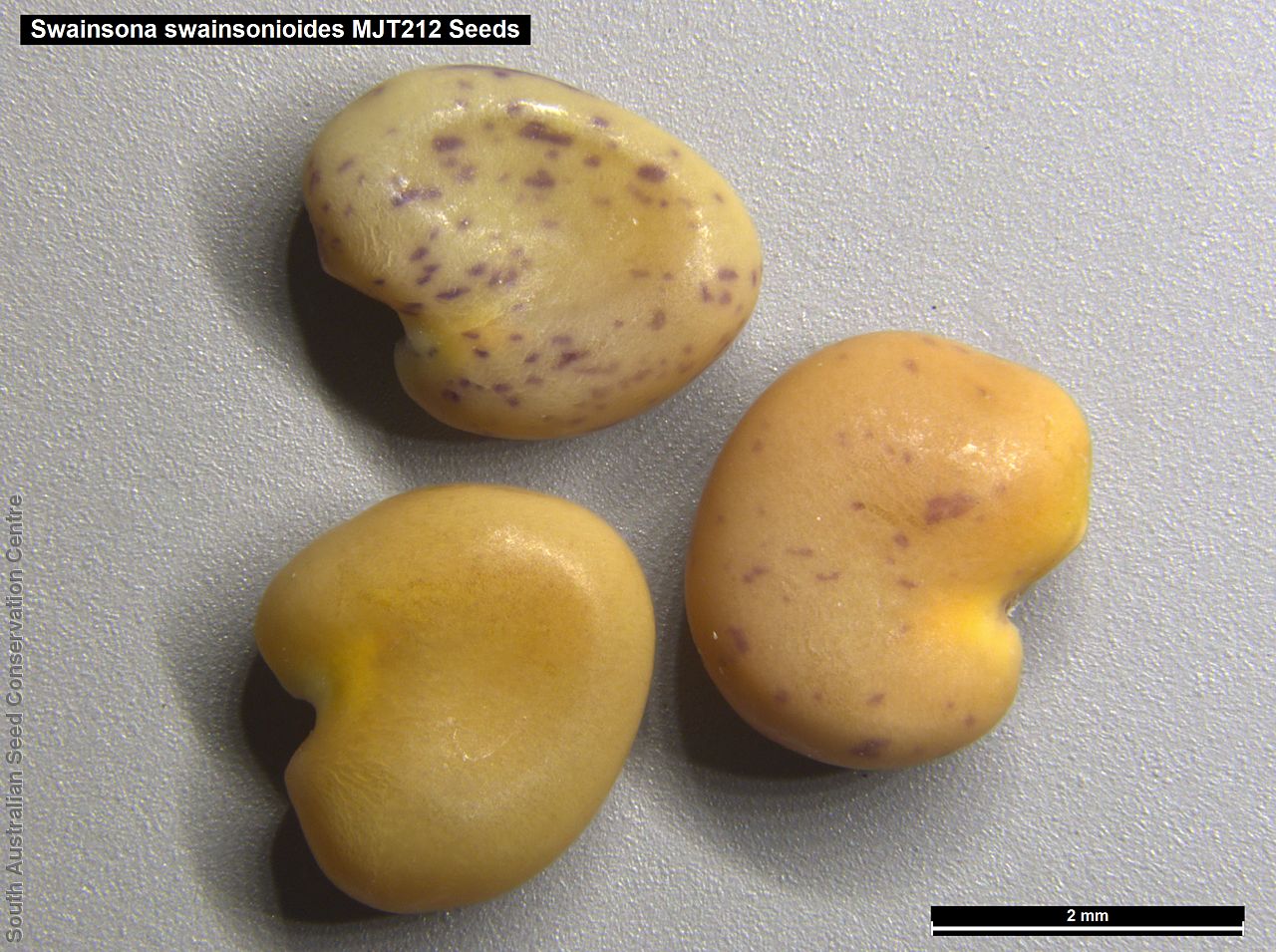
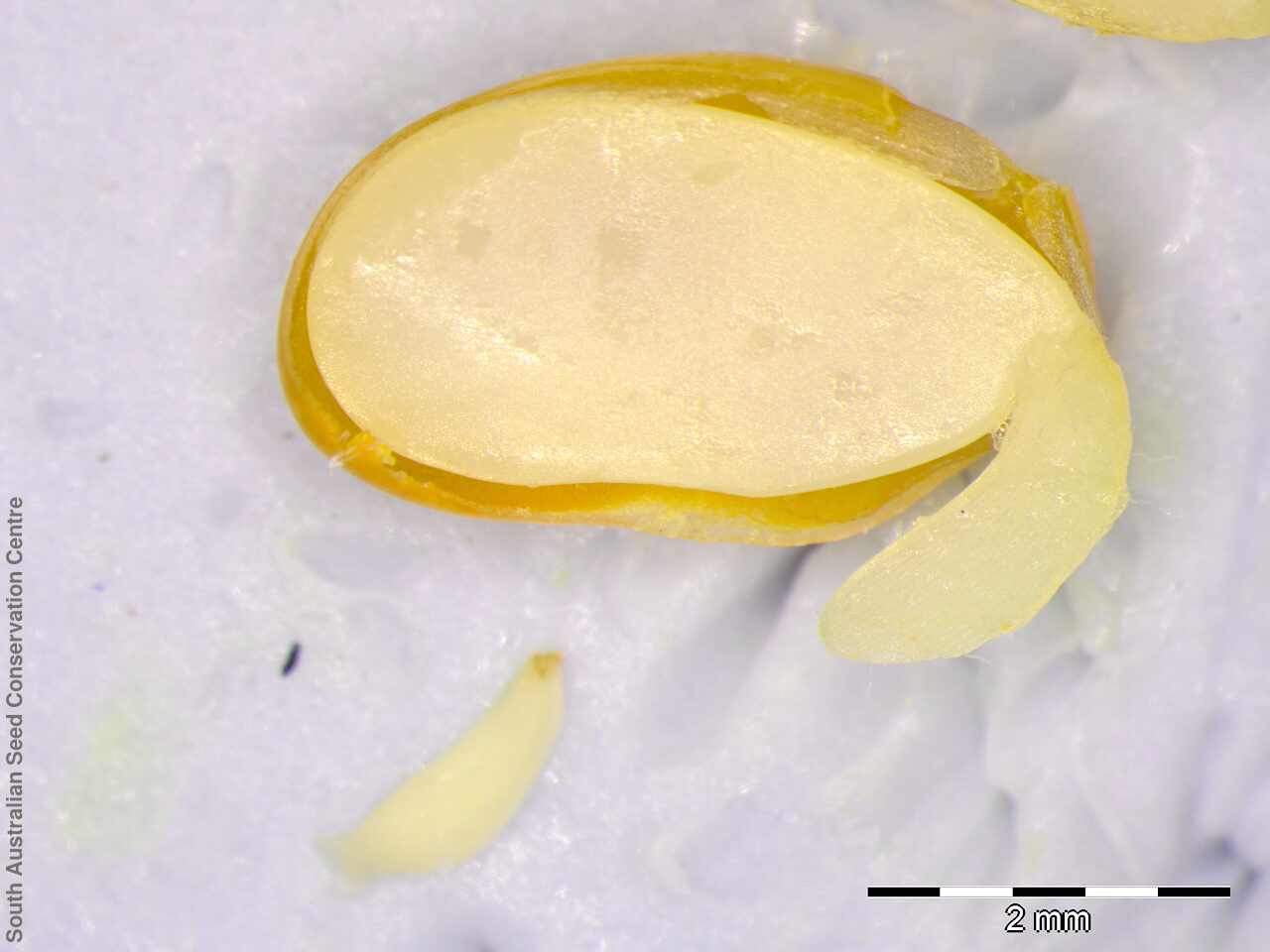
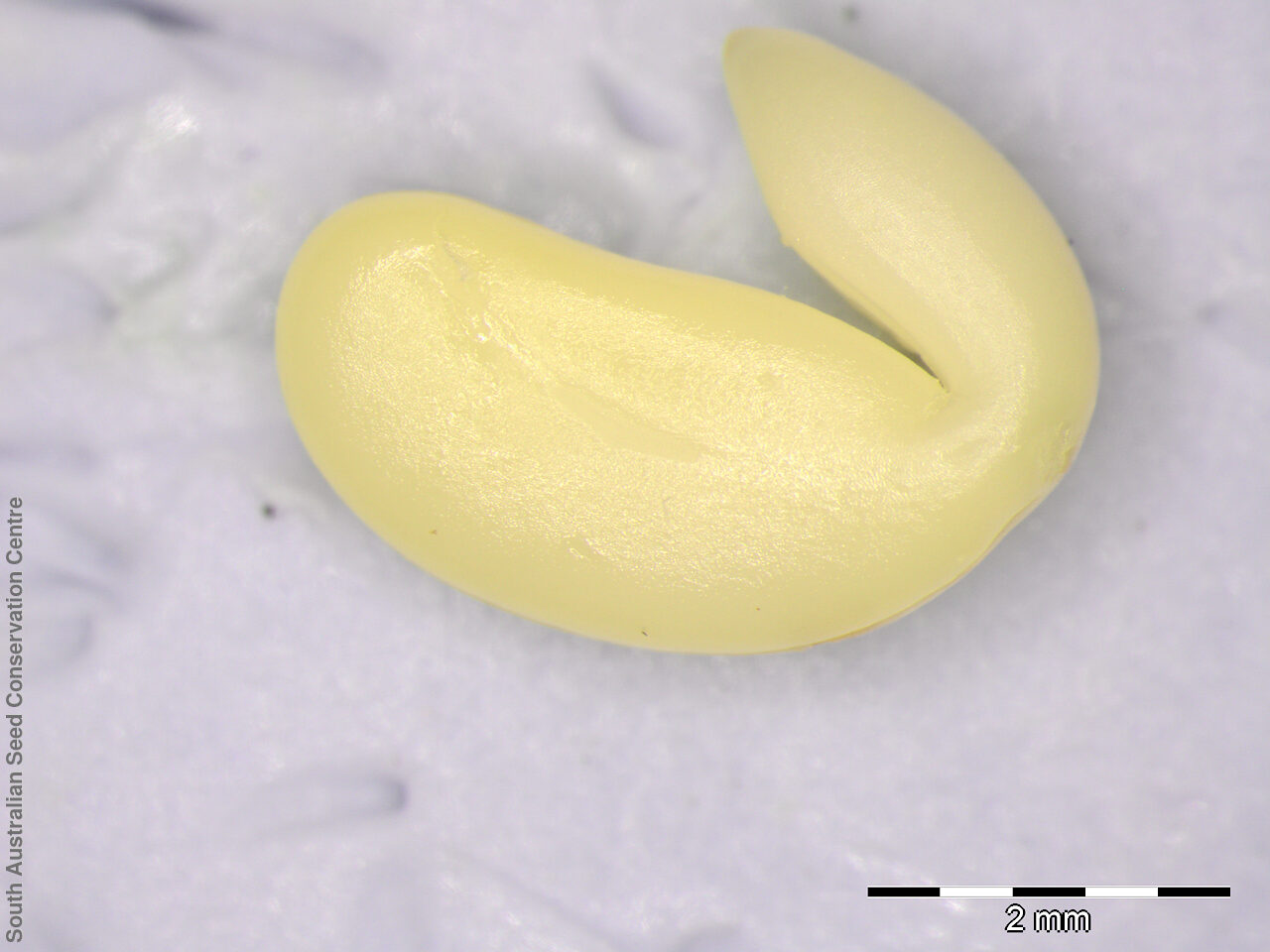
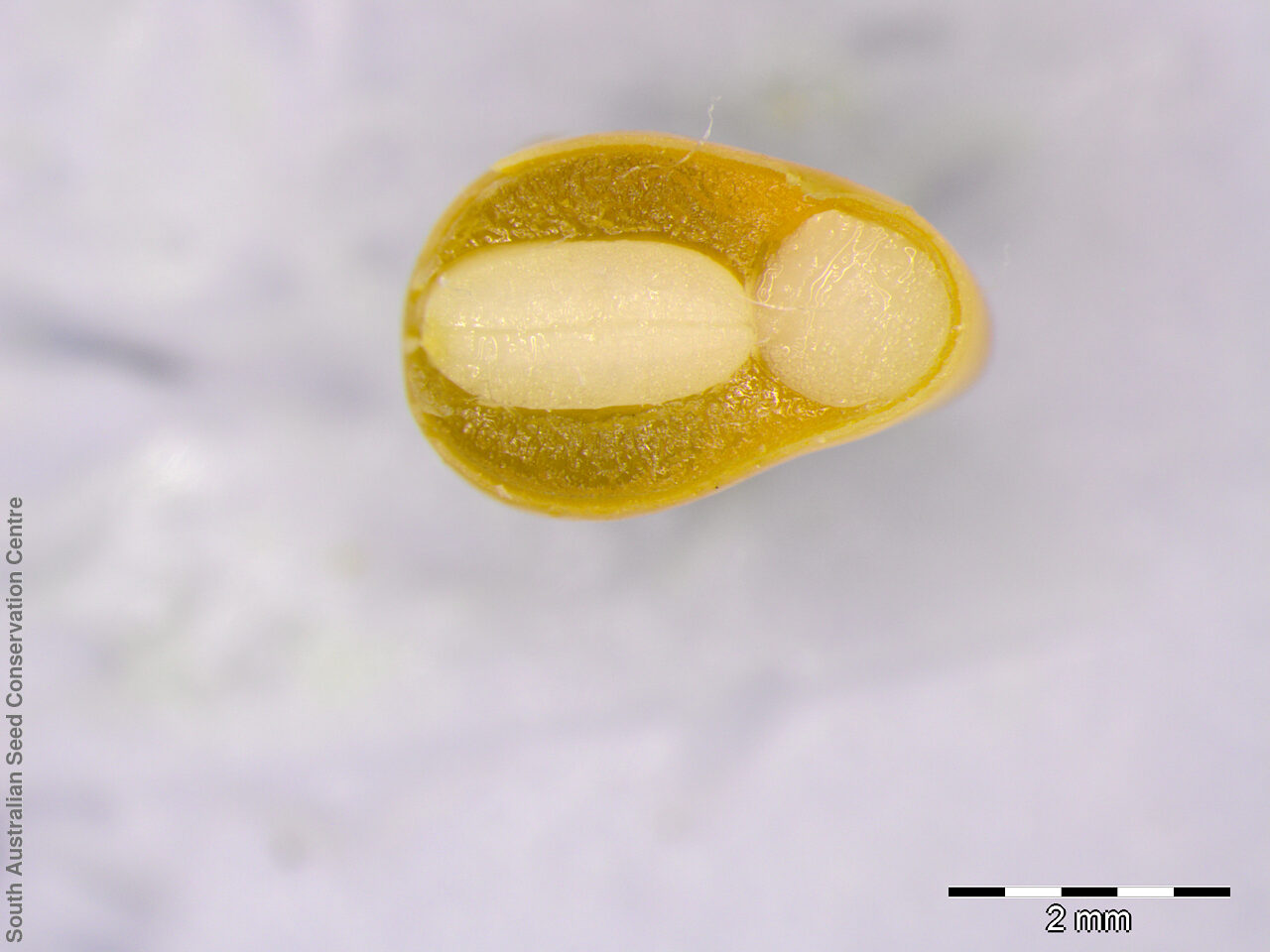

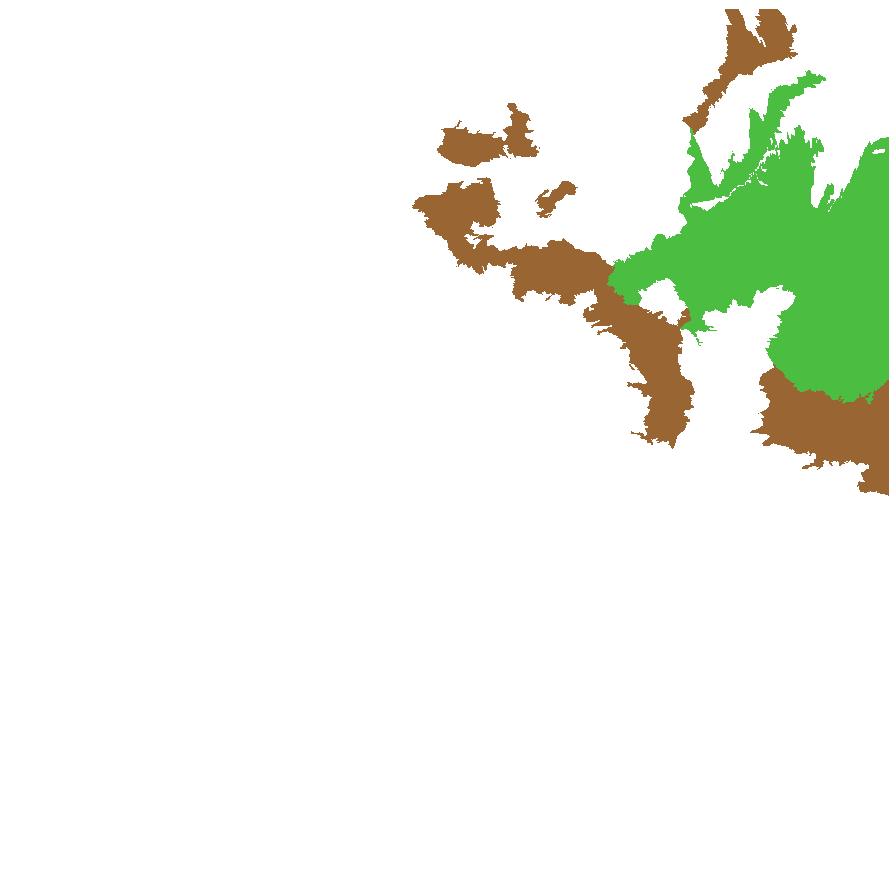
Prior names
Swainsona procumbens var. minor
Swainsona oncinotropis
Cyclogyne swainsonioides
Common names
Downy Darling-pea
Downy Swainson-pea
Downy Darling Pea
Etymology
Swainsona named after Isaac Swainson (1746-1812), an English scientist and horticulturalist who had a private botanic garden near London. Swainsonioides means resembling the genus Swainsona. Possible due to the original placement of the species under the genus Cyclogyne rather than Swainsona.
Distribution and status
Found in the north-eastern part of South Australia, growing on heavy red or black soils on plains . Also found in Queensland, New South Wales and Victoria. Native. Common in South Australia. Common in the other states.
Herbarium regions: Lake Eyre, Eastern
NRM region: South Australian Arid Lands
AVH map: SA distribution map (external link)
Plant description
A spreading ascending perennial with a number of stems arising from a taproot. Leaves to 12 cm or more long with 11-21 leaflets. Flowers purple, numerous on a long stalk. Flowering between August and September. Fruits are long, ovoid black pod to 35 mm long covered in hairs and with a firm texture. Seeds are orange, semi-flat reniform seed to 5 mm long with a smooth surface. Seed embryo type is bent.
Seed collection and propagation
Collect seeds between October and November. Collect mature pods, those drying off and contain hard seeds. Mature pods can be found lying on the ground next to the plant. When dried the pods can become hard and difficult to open. Use a rubber bung to rub the pods or break the pods open with your fingers to dislodge the seeds. Use a sieve to separate the unwanted material. Store the seeds with a desiccant such as dried silica beads or dry rice, in an air tight container in a cool and dry place. From one collection, the seed viability was high, at 95%. This species has physical dormancy that needs to be overcome for the seed to germinate (e.g. nicking or softening the seed coat).
| Location | No. of seeds (weight grams) | Number of plants | Date collected | Collection number Collection location | Date stored | % Viability | Storage temperature |
|---|---|---|---|---|---|---|---|
| BGA | 12,900 (73.15 g) | 50+ | 22-Oct-2008 | MJT212 Eastern | 20-Jul-2009 | 95% | -18°C |
Number of plants: This is the number of plants from which the seeds were collected.
Collection location: The Herbarium of South Australia's region name.
% Viability: Percentage of filled healthy seeds determined by a cut test or x-ray.